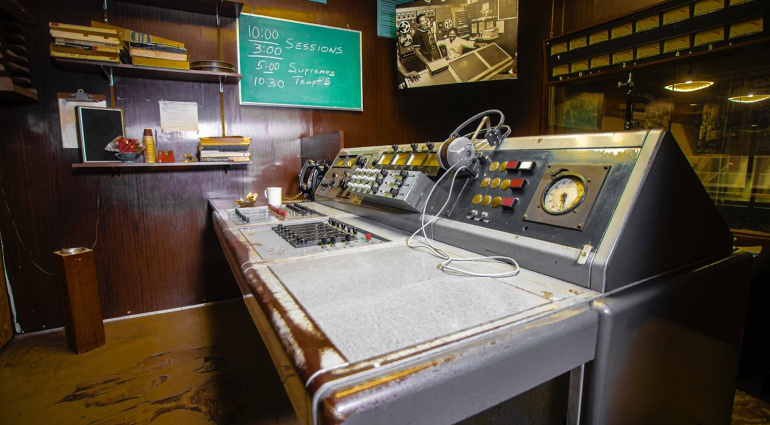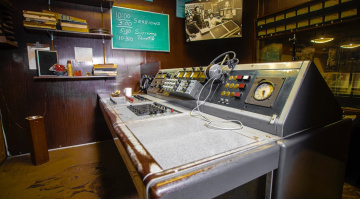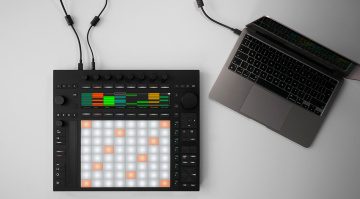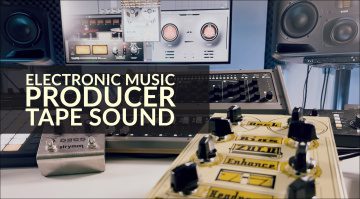Secrets Of The Motown Sound: Hitsville USA
Capture that classic Motor City sound.
We explore some of the key recording and music production aspects that made the Motown sound such a distinctive part of modern music.
In this Article:
Secrets Of The Motown Sound
The era-defining sound of Motown Records is one of the most recognizable sonic signatures in the history of recorded music. From 1959, Berry Gordy Jr. transformed a house with a photographic studio into a hit factory that unified music lovers from all over the world and changed pop music production for good.
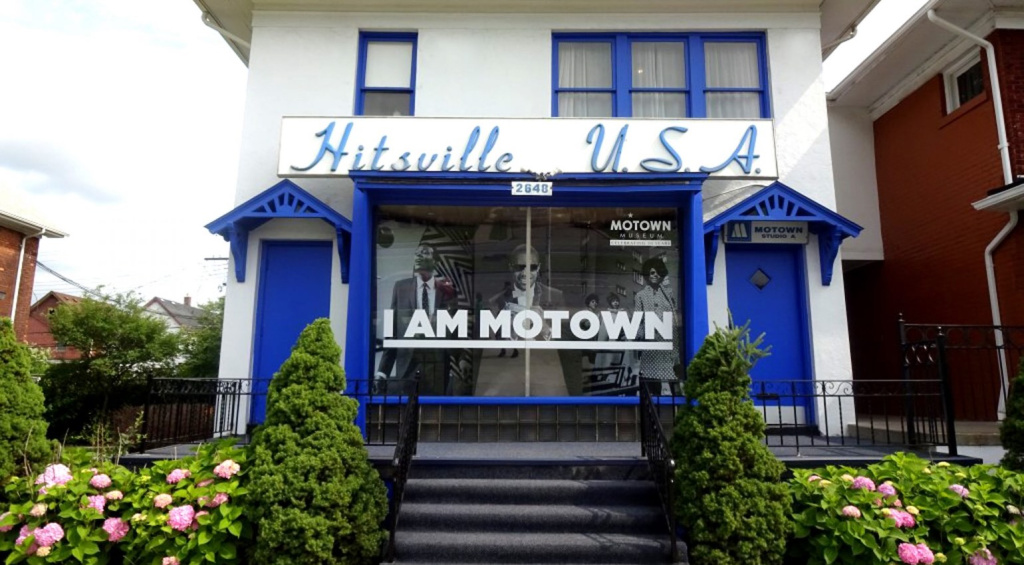
There was a soulful but sophisticated edge that was consistent throughout the Motown catalogue, from Marvin Gaye to The Supremes, The Temptations, and early Stevie Wonder records. As the first bars of any Motown classic hit you, the irresistibly catchy rhythm section dances from the speakers, capturing a feeling that still resonates today.
Of course, this magical cascade of records was no accident. There was a vibrantly innovative creative process brimming with technical ingenuity and the independent DIY spirit. Within this system, musicians, producers, and engineers created iconic records that translated through radio waves and jukeboxes, and into music venues.

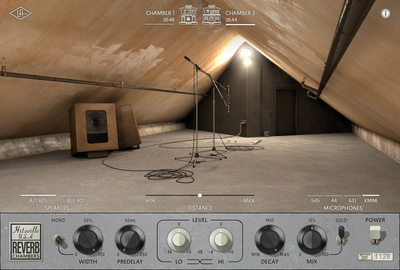
Secrets Of The Motown Sound: The Sound Of The Basement
The famous Motown sound originates from the now legendary Hitsville USA house at 2648 West Grand Boulevard, Detroit. Studio A was a relatively small recording space with low ceilings, situated underneath the house, but its plaster walls, wooden floors, and makeshift acoustic treatment provided the perfect conditions for capturing performances within its lively but tight ambient environment.
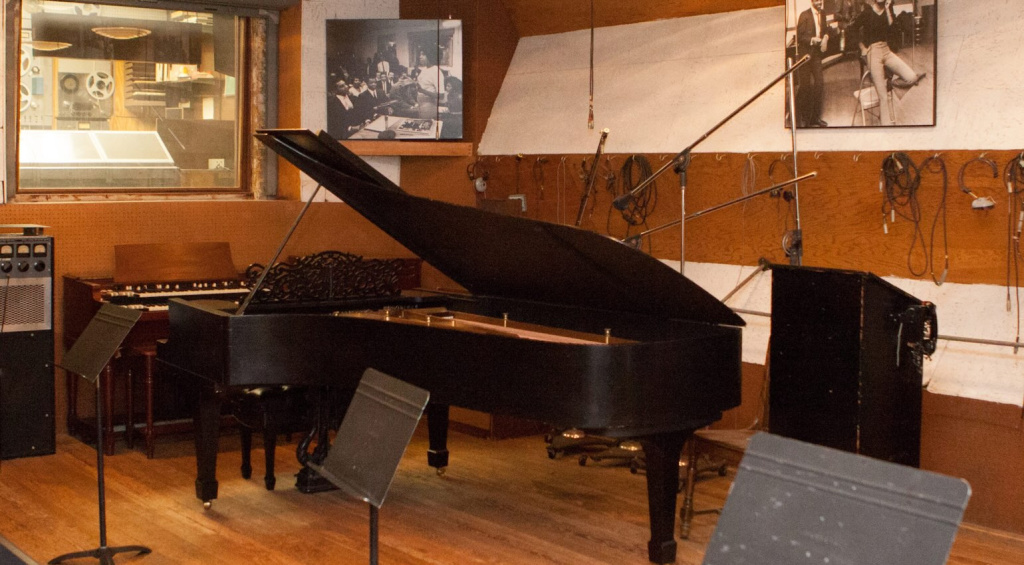
The character of the Hitsville basement made recordings stand out immediately in contrast to established studios such as Capitol Records in LA or CBS in New York. In part, this was due to the engineers like Harold Taylor and Lawrence Horn using mic placement to harness the room’s natural reflections for perfectly articulated vocals and drum sounds.
With the limitation of recording on only three or four tape tracks, each session had a slightly different approach, with many production decisions made in the moment. As post-production was still a dark art, capturing the perfect take was paramount, and this commitment to the art of live performance became the core of the Motown aesthetic. Rather than relying on an abundance of signal processing, the beautifully animated sound came through the skill of the musicians and their ability to control dynamics.


Secrets Of The Motown Sound: The Funk Brothers
The beating heart of the Motown Records hit factory was a group of musicians known as The Funk Brothers. Made up of some of the very best session players in Detroit, their collective chemistry is an intrinsic part of Motown’s sonic identity and signature groove. With walking, syncopated basslines, James Jamerson turned the bass guitar into an expressive instrument, weaving around the kick drum and snare.
Meanwhile, drummers like Benny Benjamin, Pistol Allen, and Uriel Jones created pulsating four-on-the-floor drum grooves, nuanced with ghost notes and gentle swing. Instead of laying down full chords, guitarists like Robert White, Joe Messina, and Eddie Willis worked around the downbeats and vocal lines with cleverly fragmented rhythm parts and harmonies.
Percussion was also an essential part of Motown arrangements, with finger snaps, handclaps, congas, and tambourines that complemented those classic backbeats and introduced a momentous danceable energy. Because producers like Norman Whitfield and Smokey Robinson preferred an organic feel with arrangements that evolved naturally, the musicians tracked live and without sheet music on many occasions. As a result, the recordings always had a touch of spontaneity about them.
Secrets Of The Motown Sound: Arrangement and Production
Capturing the spirit of the Motor City, Berry Gordy’s production process ran like an assembly line, with songs moving through the songwriting, arrangement, and recording stages before a “quality control” meeting prior to the release date. Although this approach was industrial and maximized output, it left plenty of room for artistic expression.
Songwriting
Creative teams like Dozier and the Holland brothers, or Ashford and Simpson, created songs that revolved around relatability and clear emotional dynamics. Strong, memorable hooks became the foundation, with choruses that stuck, and every bar was built to reach the widest possible audience.
Arrangement
The refined Motown arrangement structure created clearly defined song sections and punchy transitions.
- Drums: Tight, simple snare and steady kick pattern, with tambourine bolstering the backbeat.
- Bass: Contrapuntal basslines emphasizing the groove.
- Guitars & Keys: Rhythmic, textural parts.
- Brass & Strings: Melodic hooks responding to the lead, with layered stabs to punctuate the groove.
- Vocals: Doubled lead vocals, or harmonies for dramatic effect
With a balance of rhythmic momentum and melodic edge, each element in the arrangement played an important role. This resulted in a high-energy mix with clarity and separation, ideal for AM radio.
Production
Characteristics like warmth, intelligibility, and movement were essential in Motown music production. With a focus on midrange clarity, the clean translation to radio was guaranteed, and the rhythm section maintained the energy throughout. With the use of vocal call-and-response, drum fills, and dynamic chord changes, each song was brimming with pulsating energy and emotive drama that kept the listener hooked.

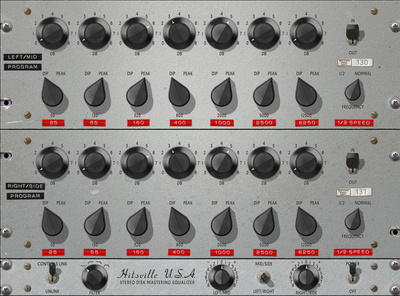
Secrets Of The Motown Sound: Technology and Techniques
The Motown sound was built through creative ingenuity rather than an endless wealth of recording equipment. With a studio that had the essentials, engineers had the right tools for the job – the ideal creative platform.
Recording Chain
- Microphones: Neumann U47 on vocals, Shure 545 (SM57 predecessor) on guitar amps and drums, RCA ribbons on brass
- Preamps & Consoles: Custom tube consoles introduced subtle saturation and warmth
- Tape Machines: 3-track Ampex recorders were used at first, and later upgraded to 8-track, expanding overdubbing capabilities.
- Reverb: The famous tiled echo chamber in the attic with its distinctively bright character, used on vocals and drums.
Techniques
- Live Tracking: Rhythm section recorded live to capture interaction and groove.
- Overdubs: Vocals, brass, and strings overdubbed for separation and clarity.
- Tape Saturation: By hitting the tape machine hard, engineers introduced natural compression and warmth.
- Manual Mixes: Without automation, the faders had to be adjusted manually during mixdown in a unique performance.
With this analogue workflow, every musician, producer, and engineer was committed to every step of the process. Without post-production to rely on, it encouraged bold creative decision-making on the spur of the moment.

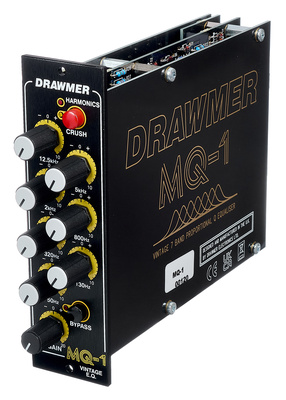
Secrets Of The Motown Sound: Recreating the Sound
Luckily, the Motown sound isn’t trapped in a time chamber. Instead, it’s a creative resource we can draw from and adapt to modern music production workflows, the way that Mark Ronson did with Amy Winehouse.
The Energy of Live Performance
The Motown sound is created by tracking musicians live. By recording musicians together, we can recreate that energy, or by overdubbing with live takes. Creating a cohesive feel is more important than robotic perfection.
Layers, Not Loops
Motown arrangements are like living ecosystems in which each instrument plays an essential role. In production, try to ensure that each part in the song is doing a clearly defined job either rhythmically or harmonically. No filler, only groove.
Analogue Warmth
Tube and tape saturation plugins can emulate the harmonics of vintage recording equipment. Even though you’re mixing in the box, subtle use of compression and distortion can add musicality and glue.
Emotive Mixing
A Motown mix brings the emotion to the listener in every way, rather than being technically perfect. Try using a fader controller for manual automation to ride levels and breathe dynamics into the mix.
Collaboration
The Berry Gordy approach to record-making is all about teamwork. He understood that ideas could come from anyone, from musicians, songwriters, and arrangers to producers and engineers. Even if you’re working alone, always look for feedback or collaborate to get a fresh perspective.

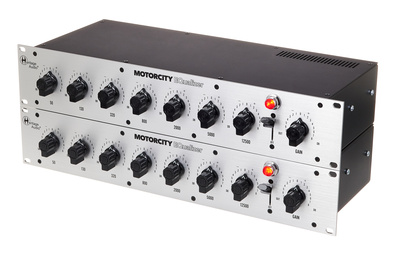
| Element | Characteristics | Equipment & Technique |
|---|---|---|
| Recording Environment | Small naturally reflective space | Bright acoustic spaces, plugins, or impulse responses |
| Drums and percussion | Tight, dry kick drum, bright snare, tambourine on backbeat | Sparsely mic’d vintage kit or plugin with tile or plate reverb |
| Bass guitar | Syncopated, melodic bassline, with warm tonality | Flatwound strings, DI and Tape emulation |
| Vocals | Focussed and doubled, with midrange warmth | Tube emulation, harmony stacking |
| Arrangement Style | Layered and uncluttered | Each instrument plays essential role |
| Workflow | Live tracking with some overdubs | Capture live performance with nuances and imperfections |
| Mixing Approach | Rhythmic momentum and groove | Dynamic automation, emphasizing emotion |
More about Secrets Of The Motown Sound:
*Note: This article contains affiliate links that help us finance our site. Don’t worry: the price for you always stays the same! If you purchase something through these links, we receive a small commission. Thank you for your support!
 3,7 / 5,0 |
3,7 / 5,0 | 